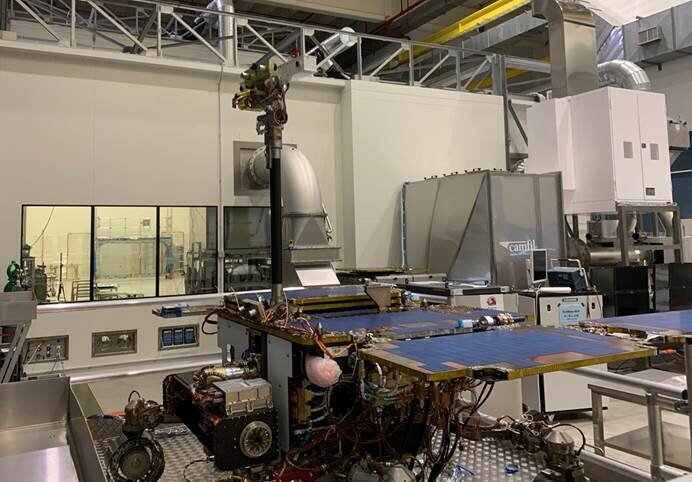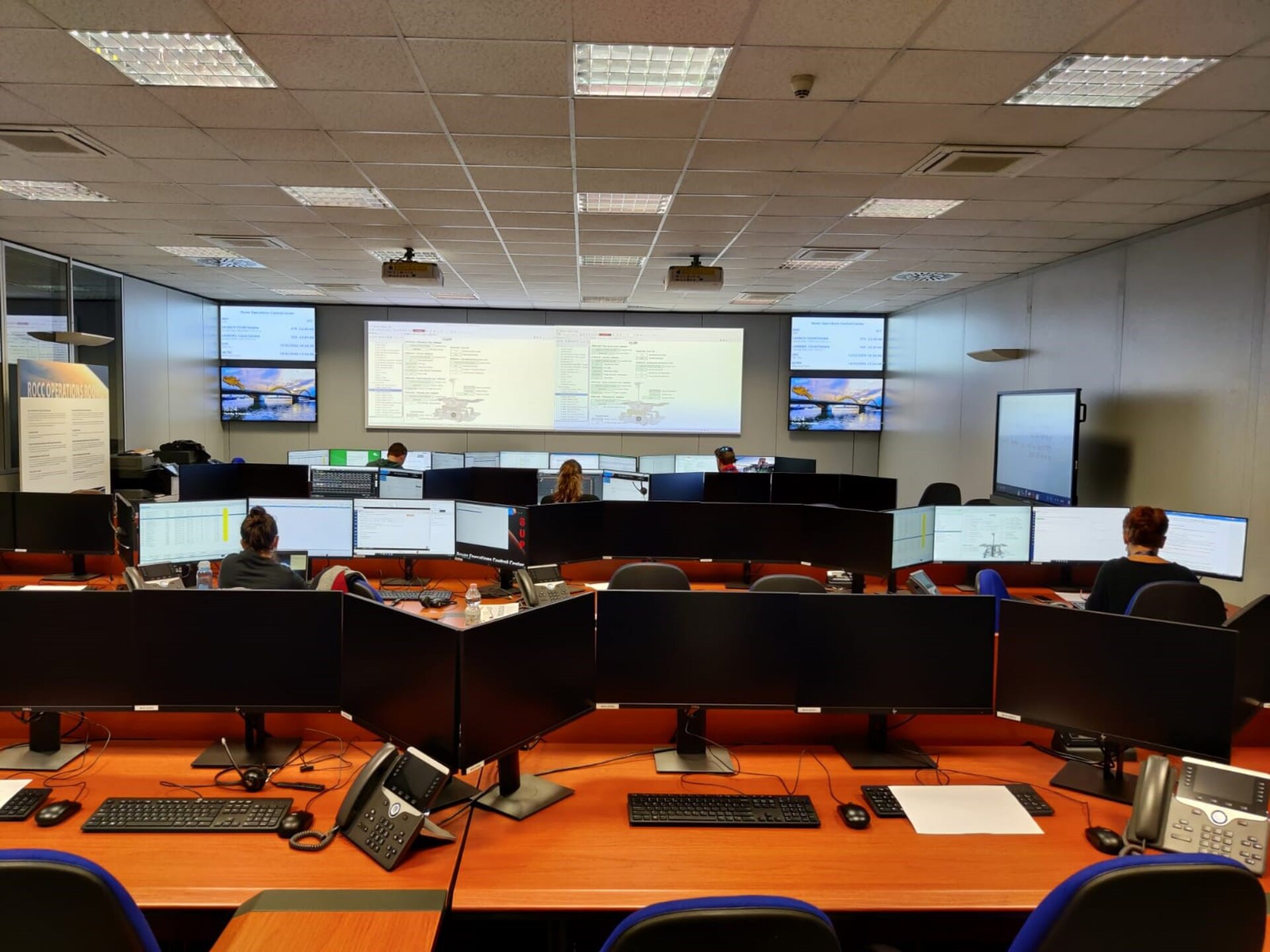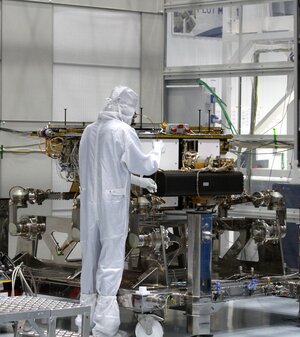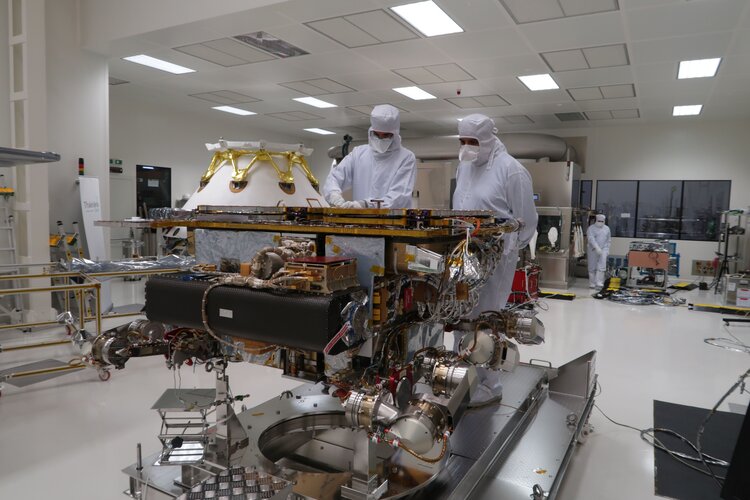Rehearsing rover operations after landing
Using a replica rover model and the Rover Operations Control Centre in Turin, Italy, ExoMars rover operators have been rehearsing activities that will take place during Rosalind Franklin’s cruise to Mars and immediately following landing.
The rover sits on the Kazachok surface platform, which in turn is encapsulated in a descent module, and transported to Mars by a carrier module. During the cruise, operators will check in about every three months on the health of the rover and its battery. Once delivered safely to the surface of the Red Planet, a number of critical operations must take place before Rosalind Franklin can drive off the platform. In fact, it will spend nearly ten days – or sols, as the 24 hour 37 minute martian days are known – getting ready to egress onto the surface of Mars.

Earlier this month, rover operations team members commanded the stationary ‘ground test model’, which is still in the integration clean room, from the Rover Operations Control Centre to rehearse the cruise activities, followed by the complex choreography of the initial days of the mission. For example, the first priority on the martian surface is to deploy the solar arrays to collect solar energy to power the rover. It will also take some ‘first look’ images what will contribute to the assessment of the local landing site. Imaging will help determine if there are any potential hazards to take into account before leaving the platform; the rover can descend forwards or backwards down one of two ramps.
On the third sol, the rover’s mast will be deployed, enabling a panoramic image from the highest viewpoint to be captured. The rover cameras are about two metres above ground level, but sitting on the platform, an extra 1 m of elevation is gained, providing the ideal vantage point to assess the overall landscape.

Starting on the fourth sol, the rover’s wheels will be unfolded from their stowed configuration and locked into position. By sol eight the ‘umbilical cord’ that attached the rover to the platform to provide power and communications will be released. On sol nine the rover’s wheels will be engaged, and finally on sol ten, Rosalind Franklin will drive down the ramps of the platform and onto martian soil for the first time.
“This test was of particular importance to gain confidence on the egress, which has a complex set of sequences, and was essential preparation for the next exciting test when we will practice driving the rover mock-up off the model surface platform in the Mars Terrain Simulator,” says Luc Joudrier, ESA’s ExoMars rover operations manager. “We also demonstrated we could perform in compliance to the COVID-19 restrictions, by completing the week-long activity with social distancing measures in place in the control room.”
Rover operators and scientists will rehearse these simulations many times and focusing on different rover activities between now and arriving on Mars as part of their training. Once on Mars the ground test model will also be used to validate any complex activities, and to test any non-routine commands before uploading them to the rover.
The mission is targeting a September 2022 launch window, landing on Mars in June 2023. Its goal is to determine the geological history of the landing site at Oxia Planum, once thought to host an ancient ocean, and to determine if life could ever have existed on Mars. Rosalind Franklin is fitted with a drill – a first in Mars exploration – to extract samples down to a maximum of two metres, where ancient biomarkers may still be preserved from the harsh radiation on the surface, and contains a sophisticated laboratory to analyse the soil samples.
The ExoMars programme is a joint endeavour between ESA and the Russian State Space Corporation, Roscosmos.








